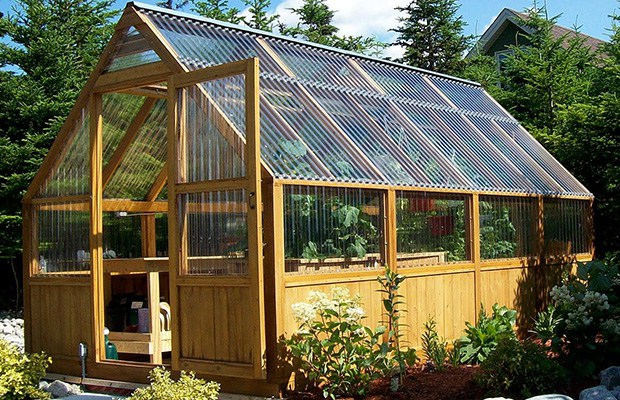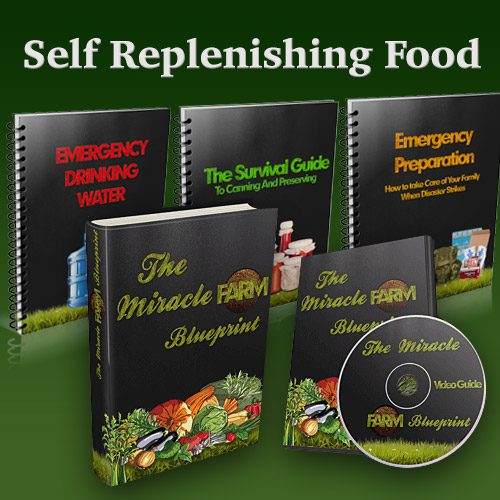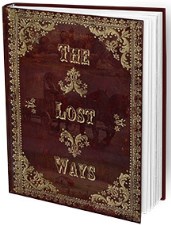As a prepper you may have stockpiled all sorts of food items, and you probably know how to grow your own food crops. You may be so skilled at gardening that you have an abundance of fresh vegetables in the summer, and you preserve much of what you grow for winter consumption. Congratulations, you’re well prepared, but have you given any thought to fresh vegetables in the winter months? You probably haven’t, because you can get those fresh (sort-of-fresh), from your local grocery store. In a SHTF situation, you may not be able to get those sort-of-fresh items. You can forget about having a crisp tomato slice, fresh lettuce, or a crunchy carrot, just to name a few of the things you’ll have to do without.
If you have a south-facing window, or better yet, a sun-room, indoor gardening can be the solution. Where window space is limited, you’ll have to decide which crops to grow, and which you can do without. Personally, I’m a tomato nut, and I love the heirloom varieties. I’m fortunate to have a sun-room, where I can grow full-size plants. If you’re not so fortunate, and love tomatoes, don’t despair. Dwarf tomato plants might be the answer. Red Robin is one such dwarf plant. It can be grown in a small container, and is about 14 inches tall when fully-grown. Each plant produces clusters of cherry-size tomatoes (about 1 inch in diameter). For a tall window, consider a PVC tubing frame and wood planks for shelves. The goal is to place as many plants as possible in direct contact with the sun when window space is limited. Plants placed farther from the window will not get adequate sunlight. You can supplement artificial light for sunlight, but I’m assuming a grid-down situation where alternative electricity is limited or non-existent.
If you’re able to provide artificial light, light in the warm spectrum (3000k), encourages flowering, while light in the cool spectrum (4100k), is best for vegetative growth. If you don’t want to mix bulbs of various k-ratings, then 5000k bulbs would be a good choice. A bulb with a k-rating of 5000 is considered one that simulates natural sunlight. Do not use incandescent bulbs, as their k-rating is in the neighborhood of 1200. Most of their energy is used to create heat. A fluorescent tube may be the best choice, since it can cover several plants at the same time. Place the light source as close to the top of the plant as possible. It’s helpful to be able to move the light source, or the plants, up or down to facilitate all stages of plant growth. Providing adequate light to tall plants can be a real challenge. Some growers deal with that problem by creating a “wall of light”, but then we’re getting into an electrical consumption issue. Perhaps the best solution in a grid-down situation is dwarf plants, where many can be placed next to a window, or where one fluorescent tube will cover a row of plants. The use of mirrors or aluminum foil to reflect natural or artificial light is also beneficial.
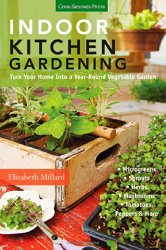
For each type of plant, you’ll have to make sure that the conditions are right. Tomatoes, for example, like cool nights followed by warm days. The soil must be warm, but cannot exceed 76 degrees, or the plant will not set fruit. I start seeds in cups, with holes in the bottom, and later transplant them into larger containers. I use good quality potting soil, and I sterilize it before use. I prefer to allow water to soak in from the bottom, rather than watering at the base of the plant. Watering at the base of the plant can cause a fungal condition known as damping off. I like to simulate outdoor conditions as much as possible, including the use of an oscillating fan now and then. The air flow not only helps with pollination, it puts a strain on the stems, helping them to grow strong. Humidity in your growing area should be 50 per cent or less, to avoid fungal problems. With tomatoes, you don’t need bees or other insects for pollination. A breeze from a fan, or shaking the stems containing the flowers will do the job. I spray the leaves now and then with water, to simulate the cleaning effect of rain.
Perhaps the most difficult part of winter growing will be controlling the temperature. If the grid is down, providing heat may be a problem. Hopefully, you’ve given some thought to the solar electric system I described in a previous article “Living Comfortably When the SHTF”. You’ll need to determine how to provide enough heat, without exceeding the electricity-producing capacity of your system. An ordinary space heater would consume too much electricity. My solution is a rectangular box, eight inches tall, with 2 sixty-watt light bulbs inside. I’ve connected the light bulbs in series, not parallel. The bulbs burn dimmer, but the energy consumption is reduced to only 30 watts. I use a heat-deflector inside the box, and the amount of heat produced is surprising. You might also consider a dimmer switch and incandescent bulbs, for an adjustable heat source. Holes in the side of the box provide an air inlet. Holes in the top of the box facilitate the delivery of warm air to the plants. I place the container plants on top of the box, on a series of shelves. I’ve also enclosed the plants and heater in plastic, to keep the warm air in. On warm days I remove the plastic. But remember, plants need carbon dioxide. A well-sealed growing enclosure may result in a carbon dioxide deficiency. Night time temperature drops (not below 50 degrees), are actually very good for the plant. Learn about growing condition requirements for each of the plant types you intend to grow, and for each cycle of growth. For many plants, the temperature requirements are not as critical as they are with tomatoes. A digital thermometer is a good tool for an indoor gardener. Periodically check the soil temperature. A moisture meter is another useful tool.
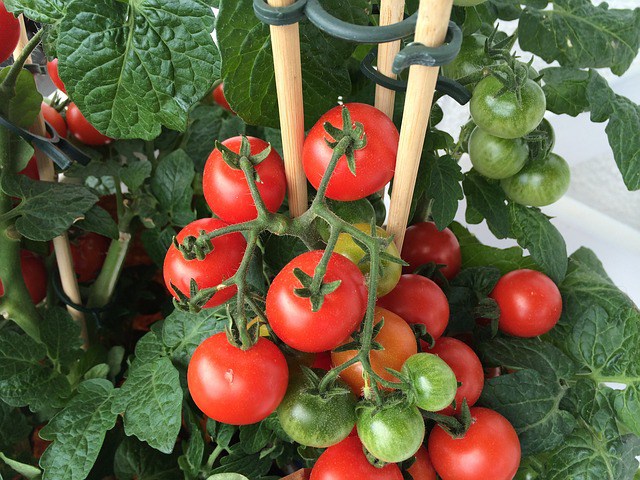
Caution: If you decide to make the heating device I described above, don’t neglect safety. Run-off water from over-watering your plants may create a shock hazard.
I mentioned Red Robin earlier, and I’ve had great success with that, but perhaps you want a larger plant, one that will give you a decent-sized tomato slice. Larger fruit comes from larger plants. If you have the room, consider Sub Arctic Maxi, New Big Dwarf, or Sophie’s Choice. These can be grown in containers, and are not as large as garden-variety tomato plants. I mentioned Sub-Arctic Maxi not only because of the size of the fruit, but also because of its ability to grow and set fruit in cool conditions. I’ve grown Sophie’s Choice tomatoes measuring in excess of 2 ½ inches. Seeds are available through on-line sources.
Red Robin can be successfully grown in a 6 inch or 8 inch diameter container, but the larger varieties would benefit from a 12 inch or larger container. Production will suffer if you under-size the container. It’s more difficult to keep up with watering, and staking can be a problem, when the container size is too small.
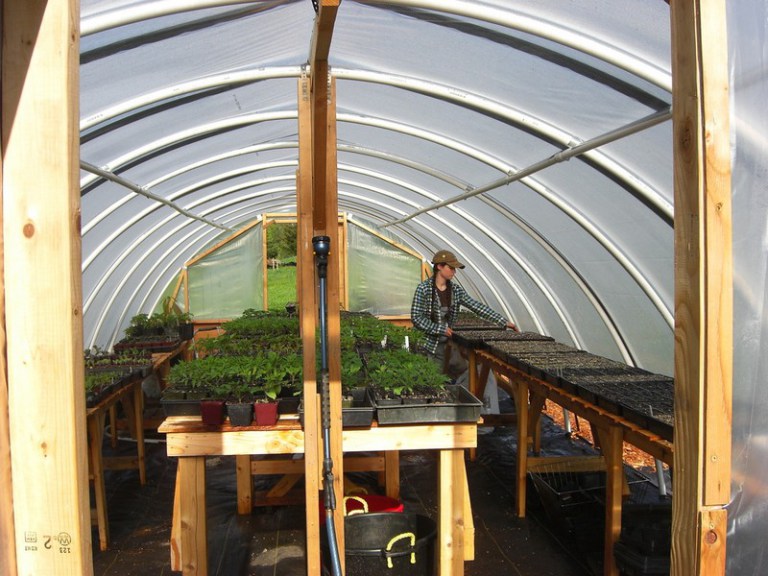
Build your own DIY Greenhouse
Tip: When growing tomatoes in containers it may be tempting to over-fertilize. After all, if a little is good, a lot must be better, right? Wrong! Too much nitrogen will result in lush plants, with little or no fruit. Be sure to get the right fertilizer, and follow the instructions. I prefer a kelp, or kelp/fish-based product. I also like to use humus, the result of composting, as a soil additive. I use “compost tea”, as a sort of “home-made” organic fertilizer. To make compost tea, fill a large container with finished compost. Add water, and let it stand overnight. Strain the liquid, and it’s ready to use.
Tip: Plants tend to bend toward the sun. Rotate plants occasionally to keep them growing straight.
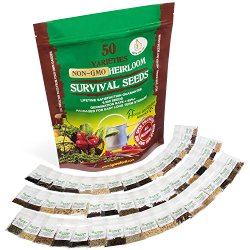
Heirloom Vegetable Seeds Bulk Pack
To be perfectly honest, growing tomatoes in the winter months is not worth the effort in my opinion, because I can simply buy them from my neighborhood grocery store. But imagine a situation where all of your vegetables come from cans. Imagine day after day of canned food, all winter long. From that perspective, indoor gardening makes sense to me. I decided not to wait until the SHTF to see if indoor growing was possible. After a few missteps, I succeeded. I now have everything I need, most importantly the knowledge, to succeed at indoor gardening. My efforts included saving seeds from successful indoor crops, because those are the seeds best suited to indoor growing. Along the way I learned about the amazing health benefits of wheatgrass, and how easy it is to grow indoors. If you don’t care to grow anything else I’ve mentioned, you should still consider wheatgrass.
If you usually start an outdoor garden with plants bought at Wal-Mart or your local hardware store, you may not have that option in a SHTF situation. In that case, you’ll need to start your garden from seeds. For many plant varieties, starting seeds indoors is beneficial. I hope you find the techniques I’ve described here helpful in that endeavor.
Once everything is in place, indoor gardening is not hard, or time consuming, but success or failure depends on how well you understand, and follow the rules. If you do the research, it’s likely that you’ll find more negative comments than positive, but remember this: Articles are often written by great writers who happen to be poor gardeners. Just because someone else is unable to successfully grow tomatoes indoors, doesn’t mean that you can’t do it. When I read an article about gardening, I ask myself “does this appear to be written by someone who has actually tried, or by someone who is book-smart”? I’ll trust the one who’s actually tried, every time.
In the event that this article is well-received, I’ll consider a “Part 2”, providing more depth, and covering topics not discussed here, including common problems and solutions. How to grow the best-tasting tomatoes is also something worth writing about.
No occupation is so delightful to me as the culture of the earth, and no culture comparable to that of the garden… But though and old man, I am but a young gardener. Thomas Jefferson
source: ThePrepperJournal

